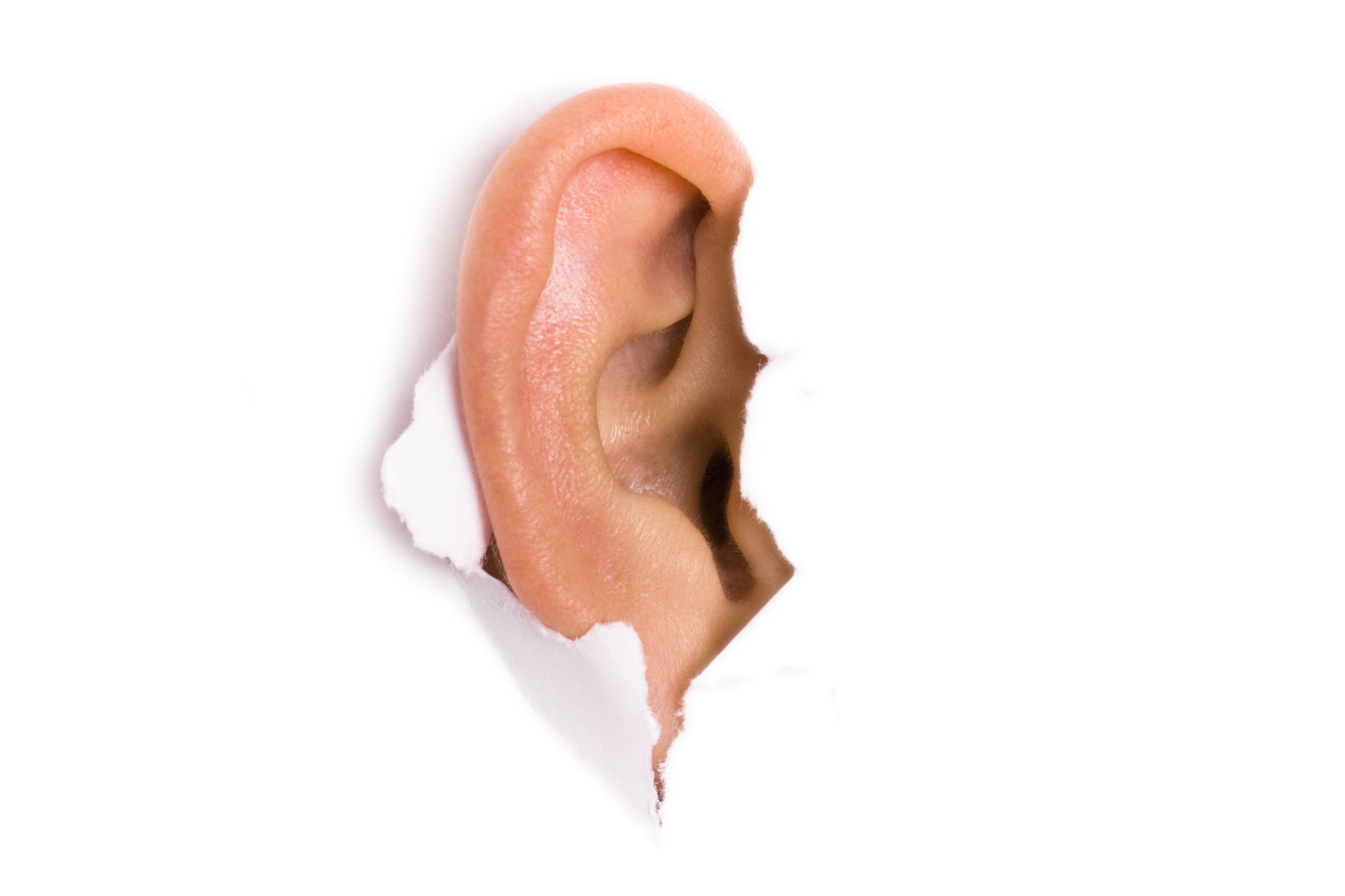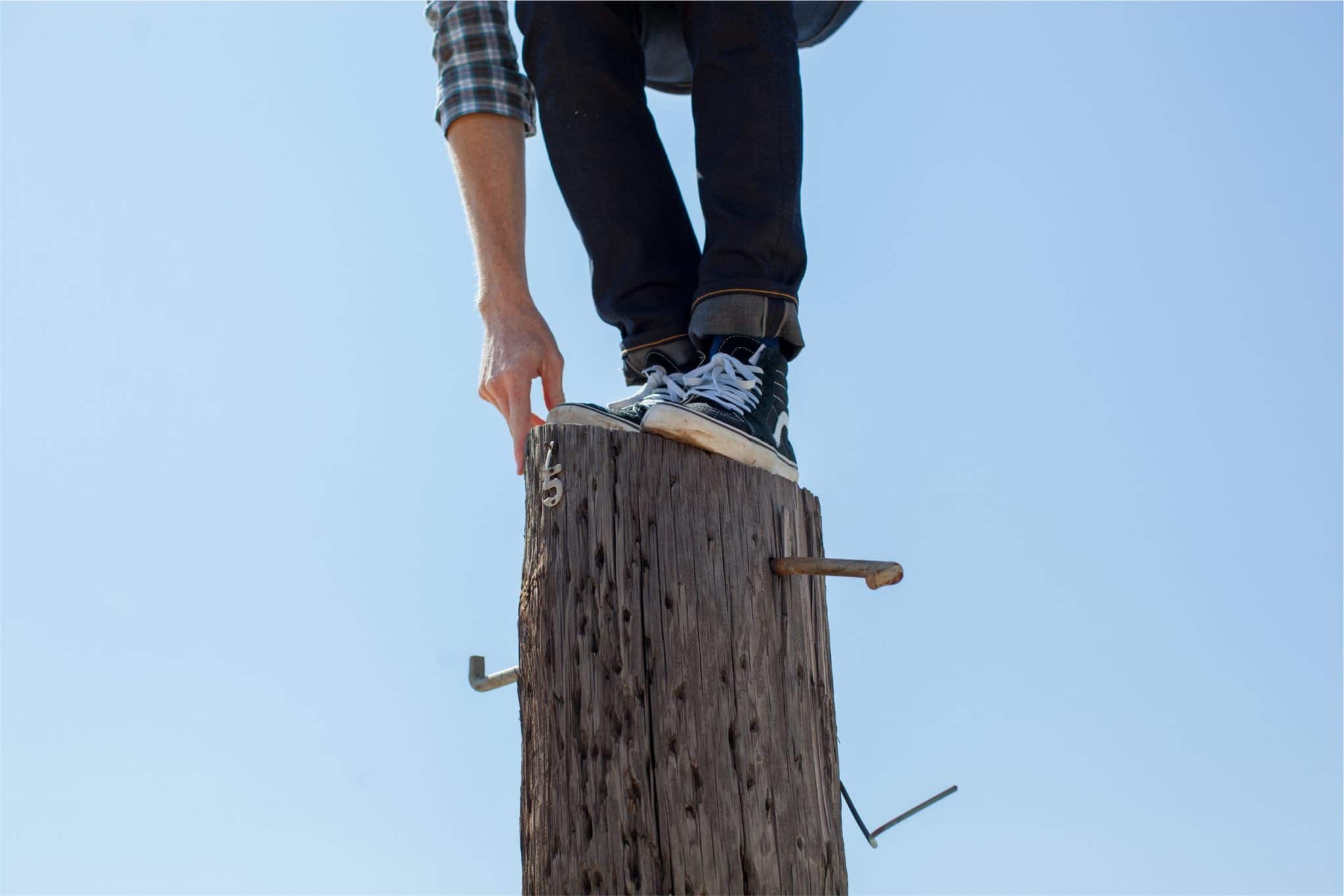Five things happened to our ancestors on the 17th of Tammuz: 1) The tablets were broken, 2) the continuous [daily offering in the Temple] ceased, 3) The city [walls] were breached, 4) Apustumus burned the Torah, 5) A graven image [idol] was placed in the Sanctuary [by Menashe] – Mishne Taanit 26a-b
We now begin the saddest period in the year called ‘The Three Weeks’ – Tammuz 17-Av 9 – commemorating the destruction of both Holy Temples in Jerusalem, the first Temple over 2400 years ago, the second one over 1950 years ago.
Thousands of years have passed. Why would we still be mourning the destruction of a… building?! True, it was a holy edifice, the holiest on Earth. But it was still a structure of stone. What did this building carry that would cause millions of people to continue grieving over its loss, and praying for its restoration?
The answer is that the Temple wasn’t a mere structure of bricks and mortar. It was a window – a literal gate – between heaven and earth. “Build Me a Sanctuary,” G-d says, “and I will rest among you.”
There are those that see the symptoms of pain; and there are those that look for its roots. Many terrible tragedies have befallen people throughout history. Many important events to commemorate. However, by remembering and mourning the destruction of the Temples, we get to the root of all our troubles.
That root being: The dichotomy between our inner spirits and our outer lives. The Temple was a gate that bridged the two. Its destruction reflected – and exposed – the duality of our lives.
Awareness is the first step in healing from any trauma or abuse. Awareness is half the cure of an illness. Denial doubles its effects.
Should we ignore the destruction of the Temple and continue to live our lives oblivious of the destruction, we then would be forced to always suffer its symptoms, never getting to the cause. By acknowledging the root of the problems – and acknowledging it in real action: in this time period of “The Three Weeks” we are forbidden to make weddings, listen to music, purchase new clothing, and do anything that brings excessive joy – we make our first step toward complete healing.
Commemorating the destruction of the Temple is recognizing the root of all our problems – personal, psychological, interpersonal, national and historical. Were we able to bridge the dual forces that split us apart and discover the underlying unity within, all our problems would be gone.
But that is simpler said than done. We therefore cannot suffice in just recognizing that all forms of destruction are rooted in the split between the sacred and the secular manifested in the Temple’s destruction. We need ways to better understand this root, so that we can find ways to actually repair the problem.
The Mishne therefore tells us that five tragic events happened both on the 17th of Tammuz and the 9th of Av. These five events are actually a breakdown of the roots of all trauma and pain:
1) The tablets were broken
The first of the five events offers us insight into the dual nature of all things that ‘break’ in our lives. On one hand, a broken thing is not a positive experience. On the other hand, when something breaks it is a signal that warns us that there is an underlying problem. Had it not cracked and broke, we would never know that we need to repair the underlying damage.
By breaking the tablets, Moses actually was expressing the true nature of the people’s relationship with G-d as a result of them building the Golden Calf: They had broken their commitment and thus, compromised their relationship.
In other words: The breaking of the tablets was not the cause of the problems, it was the effect. These tablets represented G-d giving His Essence to the people. Just as the sacred words of the Ten Commandments were engraved on these stone (sapphire) tablets, so too was G-d engraving Himself into our very beings. By building the Golden Calf and worshipping a false G-d, the people in effect ‘broke’ this essential connection (on a conscious level at least). Moses was simply demonstrating in real life this spiritual break by physically breaking the tablets.
And in doing so, Moses brilliantly and subtly revealed the ‘cure’ [the cure precedes the illness]: Feel broken for your errors, and you are on your way to redeeming them. “Nothing is as complete as a broken heart,” says the Rebbe Yosef Yitzchak. The first step to healing and growth is humbly recognizing that you are broken. If you feel complete when you really are not, you are truly broken. When you are aware that you are broken, then you will look for ways to repair yourself.
This is why the broken tablets lay side by side with the complete ones in the holy Ark in the Temple. If they represented only the tragic event of Moses breaking them, why would we need to remind ourselves of that fact by preserving the broken pieces? But they always carry a positive message: A reminder that there is a break in our lives, and for something to be truly complete we must also feel how we are broken. Not a demoralizing feeling of being broken, but an uplifting one that motivates us to heal, grow and become greater than before.
Life breaks all people, but some are stronger in the broken places. Only when they acknowledge that something is broken. When you have hurt someone and broken something in your life, but you go on as if nothing happened, it is hard to imagine how you will ever heal the break.
The first root of trauma is when we break away from our inherent (‘engraved’) innocence, when we betray our inner selves and wander away from our inherent connection to our Divine Image. As G-d asks Adam after his sin: “Where are you.” I don’t recognize you – I don’t see your Divine Image; you have betrayed yourself, you have betrayed your essential self.
Being aware of this fact helps us find our way back. Allowing this break to perpetuate until it becomes the ‘status quo,’ the ‘natural’ state of affairs, is not only tragic, but leaves us with little hope for ever awakening.
The first event of 17th of Tammuz wakes us up to the fact that there is something broken, and that we have the power to fix it.
2) The continuous [daily offering in the Temple] ceased
The constants in our lives are those eternal experiences that are there for us even when all else is lost. Once a constant has ceased, the end is near.
There were many activities and services in the Temple. But the most enduring one was the “tomid,” the daily offering that was brought each day of the year, including Shabbat, holidays, even Yom Kippur, without fail. Once the enemy caused this constant to cease, the Temple’s fate was sealed.
We all go through many fluctuations in the vicissitudes of our lives. Ups and downs. But never allow a bad mood, a blip on the screen, to stop your good habits, the things that you do without fail.
Consistency is a very powerful force. Not the cramming all in one day, but the incessant and relentless persistence is what creates true and enduring change in the world. Witness all the greatest innovators: Persistence was the ultimate key to their success. Absolute belief in your cause and the determined commitment to make it happen.
From time to time we need a jolting new experience to ignite our spirits; but the key to success is always what happens the day after the inspiration: Can you maintain it?
Hay may light quickly, but it also burns out quickly. Logs, good dry logs, take a while to ignite, but once they do, they can be depended upon to warm you for an extended time.
3) The city [walls] were breached
The wall around a city is only a wall, but it protects the precious city. Our skin consists of outer layers that are not nearly as life sustaining as our vital organs, yet they are the key to protecting our insides from infection, G-d forbid.
We build many walls in our lives to protect ourselves and our loved ones. Walls include small things we do for our beloved that may not be the essence of our relationship, but they express by far the deepest dimension of our relationship.
The deepest love, for instance, is expressed not in the things that you are required or asked to do; not even in the things that your beloved alludes that you do; but in the things that you do out of your sheer desire to please your beloved, the so to speak ‘optional walls’ you build that surround and protect the vital aspects of the relationship.
Walls also include special care we take to ensure that our weak and blind spots not get the better of us. When you are particularly prone, say, to bouts of anger, you have to build extra ‘walls’ – be extra careful, employ additional measures to prevent this part if you to burst out of control.
Each of us has areas of weakness where we need protective ‘walls’ and boundaries.
Never allow those walls to be breached. Never think, “hey who cares about the walls; as long as the inside is intact.”
This is another root of trauma: Breached walls. And the cure: To fortify the walls in your life.
4) Apustumus burned the Torah
Torah is the mandate G-d gave us all as a blueprint for life. Burning someone’s books is a desecration often equal to burning the person himself. By burning his valuable books, you are in effect burning his passions, his beliefs, his very identity.
If this is true with many books, how much more so with the Torah – the Divine blueprint of life. Torah was often the target of those that could not stand the absolute devotion Jews showed to their Torah. Indeed, many a Jew risked his own life to save a Torah scroll from being burned in a torched synagogue. Why? Because Torah was not seen merely as a book; it is ‘our life and our sustenance,’ one with life itself. If you burn my Torah, you are in effect burning my past and my future. The Torah is my enduring link to generations past, who passed it on to me, and to generations to come.
Understanding the root problem helps us uncover its cure: Hold on strong to the Book. Ensure that you dedicate time to study Torah, recognize its relevance to your life and apply it. Strengthen your connection to its eternal power. This is why we intensify Torah study during the Three Weeks, as the prophet says: “Zion will be redeemed with law [Torah] and its captives with charity.”
5) A graven image [idol] was placed in the Sanctuary
A true enemy always likes to strike at the heart of his adversary in order to humiliate and demoralize him. Placing a ‘tzelem’ – a foreign image – in the Sanctuary was the ultimate insult and humiliation.
Each of us has a very pure place in our heart and soul. It is the most beautiful spot in your life. Cherish and protect it. Never allow anything to desecrate it. Because after everything is said and done, this place is the key to your redemption.
The last and final of the five roots of trauma is desecration of your most intimate and precious side.
Ensure that your inner sanctuary always remains clean and pure of ‘foreign gods.’
By recognizing and focusing on these five roots, we can learn how to untangle the multiple mess of symptoms that plague our lives and society at large.
This is all about us; on a final note, we do have one request to G-d:
For thousands of years a nation has been mourning because of these five events. We have not forgotten. We have searched for and found the roots of so many of life’s problems. We have brought civilization to this world. We have demonstrated the power of faith and hope, even under most severe circumstances.
How much longer do we need to cry during these Three Weeks?
Read on: The 5 Roots of Trauma Revisited.








Anytime we can see the link between the pshat and the sod…of life, of our own lives…it is a gift and one of the most helpful of ways to mitigate the grief of the moment…thank you!.
I come from winnipeg, there they have a system that is very successful called neighborhood watch, and each street or so has a captain that stays up late and stays watch. Furthermore a house is designated with a sign of a child holding an adults hand called watch parent. A lost child is safe there. We should implement these ideas in NYC.
Dear Simon, as always your posts are amazing. I particularly liked the one on being constant. Thank you for your uplifiting words. Blessed be. Minah
I am currently on the mourners path…a process of examination and healing. This article has spoken to me deeply of this path. As my dear rebbe Aryeh Hirschfield, ztl, used to say It is in the broken places that the light can enter.
My shock and disbelief about the death of their son and the sisters brother is still in my mind. A grief unfathomable for a parent. I send my prayers to Hashem to comfort the family and the community during this very very sad time. And to the family of the ill man and the ill man who will be judged i send prayers of mercy. What Hashem is conveying to all of us about His glory and our sadness and pain as part of life and the mystery of death is confusing. May Moshiach come soon and the Temple be restored and the resurrection of the dead.
Dear Rabbi Jacobson; Amush,Im an avid reader of all your wonderful, and keenly insightful divrei torah. As we both are very busy, I have refrained from responding to to your weekly Parsha musings.But this one was truly a yotzei min haklal.Ive lived in this city for 44yrs,subjected to the worst kinds of violence in a civilized country.But the violence and depravity that took place this week shook me to the core, and more.Theres no such effect in Yahdus as an accident or coincidence.The fact that Leiby met this person,after passing many Frum men and woman along the way and could have asked for help, speaks to this issue directly.So we must look deeper, and possibly conclude that Leibies Neshama was the gilgul that required this type of Tikun.
Thank you so much for your deeply philosophical prose that moves me always in mind body and soul especially welcome on the 1st day of the 3 weeks.
Dear Simon Jacobson,
Thanks you so much for writing to us about the Roots of Trauma. Thank you for pouring into us these words which hashem has poured into you. Surley, goodness and mercy will follow you all the days of your life. My soul has been renewed and refreshed from this writting of yours. I plan to begin on my journey to recoginze and focus on these five roots to untangle the multiple mess of symptoms that plague my life and yes, society at large. Again thank you and shalom, shalom.
I suggest to all of you in Chutz LAretz..read the parsha of Rabbi Nachman Kahane.
Its time to wake up…the writing is on the wall and you are blinded.
Like, Dude! How can like Gd let this happen to Gds house!
Hi Rabbi,
Can G-d not rest in each of us individually? We are channels too, individual temples (and I am not talking in a Christian sense). Just that each of us is directly connected to G-d, we are G-d within. No?
that all makes a lot of sense, thank you
Thank you!
The writing is on the wall, such adequate sentences. The time is completed, therefore G-d wait on our move.
Did you say that the most difficult person if not impossible to repair was the one who was sexually abused in childhood?
How is that related to this topic?
When I thought of repairing our relationship with Hashem I thought perhaps the seeds to the answer of repair may lie in the solution to this human problem. The human problem of helping a person who was sexually abused overcome their emotinal issues. How can the everyday person be made aware and cognizant of what to do and how to be supportive to a victim of child sexual abuse?
If we already looking for roots of the problem, can we at least be clear on who are the people. Lets remember that we are speaking ONLY about male population. Women did nothing wrong, but they too are part of people. Yes?
Also, the hate was among leaders that brought the destruction of the Temple. Therefore, it would be great if articles that are written would reflect these facts as well….if we truly want to get to the roots of the problem. Do we? Unless everything that is offered on this website mainly for a male population.
Thank you for providing this beautiful framework to draw meaning from and rise up in the Three Weeks. Your words and articles are a great inspiration.